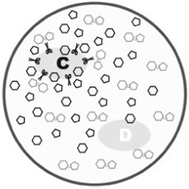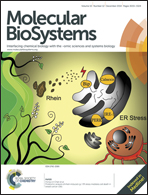Evolutionary game theory: cells as players
Abstract
In two papers we review game theory applications in biology below the level of cognitive living beings. It can be seen that evolution and natural selection replace the rationality of the actors appropriately. Even in these micro worlds, competing situations and cooperative relationships can be found and modeled by evolutionary game theory. Also those units of the lowest levels of life show different strategies for different environmental situations or different partners. We give a wide overview of evolutionary game theory applications to microscopic units. In this first review situations on the cellular level are tackled. In particular metabolic problems are discussed, such as ATP-producing pathways, secretion of public goods and cross-feeding. Further topics are cyclic competition among more than two partners, intra- and inter-cellular signalling, the struggle between pathogens and the immune system, and the interactions of cancer cells. Moreover, we introduce the theoretical basics to encourage scientists to investigate problems in cell biology and molecular biology by evolutionary game theory.


 Please wait while we load your content...
Please wait while we load your content...